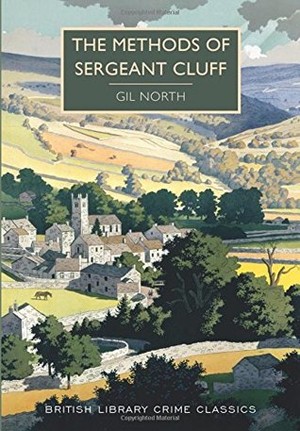
The story opens on a wet and windy night in the fictional town of Gunnarshaw, on the edge of the Yorkshire moors. Jane Trundle, an assistant at the local chemists, Greensleeve’s, has been found dead in a back alley of the town. She was struck on the back of the head, crushing her skull. Sergeant Caleb Cluff of the local police force is sent to investigate.
There’s an obvious suspect – her sometimes boyfriend, Jack Carter. Cluff, ably supported by his faithful dog, Clive, and PC Barker, is not convinced it is so cut and dried. Yes, Trundle and Carter had been in a relationship, but it appears to Cluff that other forces are at play – those relating more to social mobility and the class structure. Cluff’s boss, Inspector Mole, presses him for a result but the sergeant resists and pursues the investigation his own way, despite political pressure from above to come to the conclusion everyone wants.
Cluff has a suspect in mind. He just needs the evidence to prove it. What he discovers will blow the town apart…
The Methods of Sergeant Cluff is a really interesting spotlight on times gone past. Streets and houses are lit by gas, land lines are used to make calls so Cluff undertakes his investigations without the constant interruption of a mobile phone, and it’s long before the internet. Pathological information and crime scene assessment are just a tiny part of it. Detection is, literally, via footwork, gut feeling and interrogation. One statement encapusalates this moment in time:
“Who doesn’t have a car these days?” asks PC Barker.
This is a short book, pocket-sized and 169 pages, but it is a really neat little package. There’s a sort of social stiffness about it, an element which Cluff is attempting to break down with his single-minded methods.
To go with that stiffness, the style of writing and somewhat stilted language are relics of this book’s era and can detract from it somewhat. Every now and again the author does assume that we’ve read the first book in the series – Sergeant Cluff Stands Firm – and have become entirely familiar with the people and places. Don’t worry, though, The British Library reprinted the earlier book in July so it should be easy for you to find.
The relationship between Cluff and the other characters is particularly interesting. With Mole, his superior officer, Cluff just does what the hell he wants, when he wants. With characters in the village it’s pretty much the same. For example, he’ll just cross the road and expect the traffic to stop, or stand outside Greensleeve’s shop until someone gives him the answers he wants. However, there’s always the threat of retirement – enforced or voluntary. The Cluff family has a farm above the town and he is regularly reminded he could work there instead, something which sends a shiver down Cluff’s spine.
The Methods of Sergeant Cluff is a great police procedural from an age gone by, and proof that there are plenty of lost gems out there for publishers and readers to rediscover both in print and, nowadays, as ebooks.
Classics in September 2016 is sponsored by Bloomsbury Reader.
British Library Publishing
Print/Kindle/iBook
£7.99
CFL Rating: 4 Stars